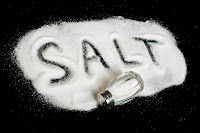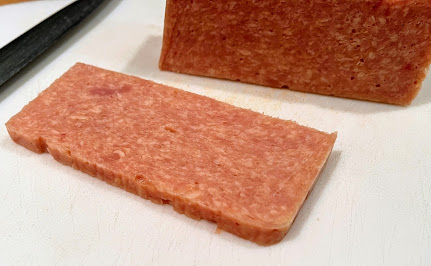Marinated Garlic
Garlic, how do I love thee. Who doesn't love marinated garlic? It's sweet and mellow, and it's a great addition to any dish.
The garlic gets infused with Vinegar, Olive oil herbs and takes something ordinary and makes it into something extraordinary. I personally eat it like I eat olives, and I also use it in salads and my Giardiniera.
Now to get a little preachy so please bear with me. It's not my intention to teach you about canning or Botulism, but it becomes a threat when you mix garlic in oil or a combo of vinegar and oil, and it's not kept at the correct refrigerated temps at the proper PH. Of course, you want to avoid the danger zone (40-140 degrees {there is a debate about danger zone temps too}). All of this can be mitigated if the Ph is below 4.6. Note: there are reports that botulism can still grow at low refrigerator temps but just at a much slower rate. You can Pressure Cann garlic too if you're interested, which creates a Candied tasty treat I use in everything.
Yes, you can toss everything above into a bottle and refrigerate, and the chances are it will be fine. Other techniques involve submerging your garlic in olive oil and heating it to at least 251 degrees (pressure canning temps), and holding it for at least 15 minutes... so I have read. I didn't want to cook or burn my garlic, so I chose another way.
Of course, you can mitigate some of these concerns by adding vinegar, which is part of the recipe. A slight acidity tastes excellent (I am ultra-paranoid about Food contamination and safety). It's called acidifying, if you were curious. Vinegar is the key to lowering garlic's PH, which makes it safer to consume and improves shelf life. High acid levels are needed to prevent the germination of Botulism spores into the Botulism toxin. The Botulism spores can only develop into the Botulism toxin in low acid, oxygen-free environments.
When you think about Ph and boiling, it's typically associated with canning. Although we are not canning here (an option, of course), I want to prepare this Garlic as if we were going to can and mitigate any potentially harmful organisms that could find their way into my food.
When you preserve something in a boiling water bath canner, you heat the jars and their contents to the boiling point. Of course, canning in the hot water bath also removes oxygen as they cool (another story). That heat is enough to kill off the microorganisms that can cause spoilage, mold and fermentation, and other nasty stuff, but it's not enough to kill botulism spores. If the Ph of the food you are canning or storing is below 4.6, you are good to go. My Garlic could be Hot water canned safely because I do everything as if I was going to Cann. So with that, I prefer the Hot Pack method even though I will not be canning. Hot packing is the practice of heating freshly prepared food to boiling (not a vigorous boil), simmering it for at least 5 minutes, and promptly filling jars (note: this kills off everything too). I do everything but the canning process, but if I wanted to, I could because the Ph is below 4.6. How do I know it is??? I have a Ph. Meter.
How to make Marinated Garlic
I am no farmer, so I get my bulk garlic from Costco. You can't beat it for the size and price.
What a thing of beauty. Can you imagine peeling all this garlic? I hate peeling garlic, let alone this amount.
I used a water displacement technique to find out how much liquid I need. I placed the garlic in a bowl and added enough water to come up at least an inch above the garlic.

I then poured the water into a large measuring container. As you can see, it yielded 6 cups of water or about 1420 ml. So easy to do. No guessing here.....
I added 3 cups of White Vinegar (I prefer champagne but did not have any on hand) and 3 cups of water, 1 cup of salt, and 1 cup of sugar. This yielded a PH of about 3 (I had Ph readings from 2.86-3.1 depending on how hard I stirred). Way below the 4.6 thresholds. Oh, the ratio here will work with any amount of garlic. 3 Vinegar, 3 Water, 1 salt, and 1 sugar. Bring to a brisk simmer. After the salt and sugar were dissolved, I added the garlic and simmered for about 7 minutes. I think anything more than 5 would have been adequate. I have heard of people pouring this hot substance over the garlic and canning from here. Since I will be using olive oil, I wanted to be extra cautious and kill everything.
Note: Olive Oil will solidify in the refrigerator, but Canola won't. If the flavor is important to you, use Olive oil or both. Use Canola oil if you do not want the Giardiniera to solidify in the refrigerator.
When you're all done, drain the garlic. This next part is all about preference. After draining, toss garlic into a large storage container. Add enough olive oil to this container to cover garlic or......(read on). At this point, you have several options. Use olive oil only and keep it refrigerated. If you acidify your olive oil, you can extend its life and guarantee that it will be safer to consume. And in my not so humble opinion, the vinegar makes it taste better. You can replace some of the Olive oil with Vinegar, and I like adding about 35-45% Vinegar. On the plus side, it tastes better, and it keeps the Ph below 4.6.

 Ahh, the spices come next. I added a touch of Agave Nectar, Ground Black pepper, Red Pepper Flakes, Oregano, Basil, Thyme, and Parsley. Add as much or as little as you want. From here, adjust to your own taste. Add more salt if you think it needs it. In my version, the salt content was just about right. I will let it sit for a day or two before I adjust. Store in refrigerator.
Ahh, the spices come next. I added a touch of Agave Nectar, Ground Black pepper, Red Pepper Flakes, Oregano, Basil, Thyme, and Parsley. Add as much or as little as you want. From here, adjust to your own taste. Add more salt if you think it needs it. In my version, the salt content was just about right. I will let it sit for a day or two before I adjust. Store in refrigerator.From the Colorado State University
Flavored Oils
Flavored Oils
Safety Concerns
Herbs- and garlic- in oil mixtures are considered potentially hazardous food items by the U.S. Food and Drug Administration (FDA) because of the large number of cases of botulism that have been traced to improperly stored commercial and home-prepared mixtures of garlic and oil. Short refrigerated or frozen storage is necessary because all other conditions that favor growth ofC. Botulinum are met: low acid environment with pH higher than 4.6, anaerobic conditions (oil), food and moisture source (garlic), not boiled before eating.
Garlic in oil. For added safety, the FDA now requires that all commercial garlic in oil products contain specific levels of microbial inhibitors or acidifying agents such as phosphoric or citric acid. Although most garlic products do contain these additives, some boutique or specialty mixes may not. Always check the label to be sure.
As for home-prepared mixtures of garlic in oil, the FDA recommends that these “be made fresh for use and not left at room temperatures.” Any leftovers should be refrigerated for use within three days, frozen for longer storage, or discarded.
The reason for the concern is that unrefrigerated garlic in oil mixtures lacking antimicrobial agents have been shown to permit the growth of C. botulinum bacteria and its toxins, withoutaffecting the taste or smell of the products. Toxin production has been known to occur even when a small number of C. botulinum spores were present in the garlic. When the spore-containing garlic is bottled and covered with oil, an oxygen-free environment is created that promotes the germination of spores and the growth of microorganisms at temperatures as low as 50 F.
Botulism is a potentially fatal food poisoning characterized by blurred or double vision, speech and breathing difficulty, and progressive paralysis. Without prompt and correct treatment, one-third of those diagnosed with botulism may die. C. botulinum spores are widespread in the environment but cause no harm as long as oxygen is present. Also, the toxin produced by C. botulinum bacteria is readily destroyed by heat. Boiling a potentially suspect mixture for 10 minutes, plus one minute for each 1,000 feet above sea level, will destroy any botulism toxin that may be present.
Vegetables and herbs in oil. Several cases of botulism have been associated with home-prepared vegetables and herbs stored in oil. These products also should be made fresh, with leftovers refrigerated for use within 3 days, or frozen for longer storage. Vegetables have a high water activity level which further encourages the growth of C. botulinum bacteria in an anaerobic environment. Even when dried, there is still the potential for risk, unless the vegetable has been acidified to a pH of 4.6 or lower.
Dried tomatoes in oil are less of a safety concern than other mixtures in oil because the pH of tomatoes is generally 4.6 or lower. In addition, by sufficiently drying the tomatoes, conditions become even less favorable to growth of C. botulinum due to a decrease in water activity. Dried herbs in oil also are less of a safety concern because of their low water activity. However, to ensure safety, it is recommended that all tomato in oil and herb in oil products be stored at refrigerator temperatures and used within three days. If longer storage is desired, these products should be frozen in meal sized portions.
Avoid Rancidity
In addition to reducing the potential for growth of C. botulinum bacteria, storing flavored oils in the refrigerator or freezer helps keep the oils from becoming rancid. A putrid “off ” odor indicates the development of rancidity. All fats and oils will become rancid given enough exposure to air, sunlight and heat. Polyunsaturated fats, like vegetable oils, are especially prone to such deterioration. Eating rancid food won’t make you sick, but it may be unhealthy in the long run. Rancid fat contains chemicals called peroxides and aldehydes that can damage cells and may even encourage cholesterol to clog arteries.
It is important to note that rancidity and the presence of botulism toxins are not necessarily related. Toxins may be present without any hint of an off-odor. Likewise, an off-odor does not necessarily indicate the presence of botulism toxin. It does, however, indicate the product may have been left for long periods at room temperature, which would promote the growth of C. botulinum. Therefore, it’s best to discard any oil-based mixtures that have become rancid so they’re out of the reach of humans or animals.
References
Nummer, B.A., Schaffner, D.W., Fraser, A.M. and Andress, E.L. 2011. Current food safety issues of home-prepared vegetables and herbs stored in oil. Food Protection Trends 31:(6) 336-342.
Simonne, A. 2010. Herbs and garlic-in-oil mixtures: Safe handling practices for consumers. FCS8743. University of Florida Extension, Gainesville, FL.
Andress, E.L. and Harrison, J.A. 2000. Preserving Food: Flavored Vinegars. FDNS-E-1. University of Georgia Cooperative Extension Service, Athens, GA.
1P. Kendall, Ph.D., R.D., Colorado State University Extension foods and nutrition specialist and professor, and J.Rausch, B.S., food science and human nutrition. 3/00. Revised 5/12.
Colorado State University, U.S. Department of Agriculture, and Colorado counties cooperating. Extension programs are available to all without discrimination. No endorsement of products mentioned is intended nor is criticism implied of products not mentioned.












Comments
Post a Comment